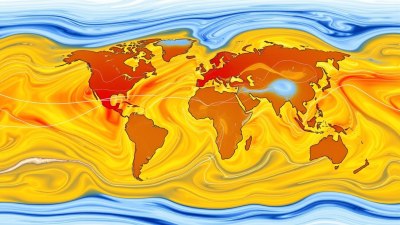How Solar Flares Affect Earth’s Weather and Power Grids
Discover the impact of solar flares on Earth's weather systems and power infrastructure.

Solar flares, massive bursts of radiation emanating from the sun, can have profound effects on Earth's atmosphere and technological systems. Understanding these phenomena is crucial as they pose risks to our daily life and infrastructure.
Understanding Solar Flares
Solar flares are strong bursts of radiation from the sun's surface, the result of complex interactions within the sun's magnetic field. They are classified into categories based on their intensity, ranging from A (smallest) to X (largest). X-class flares are the most powerful and can have significant impacts on Earth.
Impacts on Earth’s Weather
The influence of solar flares on Earth’s weather remains a topic of scientific debate. While solar activity, including solar flares, is linked to long-term climate shifts, their direct impact on short-term weather is less clear. Solar flares can affect the upper atmosphere and subsequently influence weather patterns.
Magnetosphere and Atmosphere Interaction
The Earth is surrounded by a magnetic field, known as the magnetosphere, which protects our planet from solar wind and cosmic radiation. When a solar flare occurs, the intense emissions can disturb the magnetosphere, causing geomagnetic storms that have the potential to alter atmospheric conditions.
Geomagnetic Storms
Geomagnetic storms, triggered by solar flares, can impact weather by inducing currents in the atmosphere. This can lead to changes in temperature and precipitation patterns, influencing weather systems globally. While not entirely understood, some studies suggest a potential link between intense solar activity and extreme weather events.
Historical Examples
Historically, events such as the Carrington Event of 1859 demonstrate the potential of solar flares to impact Earth. This massive solar storm caused widespread telegraph system failures and created vivid auroras. Researchers are increasingly examining past solar activity for correlations with weather events to better understand their relationship.
Effect on Power Grids
Power grids are critical infrastructure that can be significantly affected by solar flares. During geomagnetic storms, fluctuations in the Earth’s magnetic field can induce electric currents in power lines, potentially damaging transformers and causing widespread outages.
Protection Measures
To mitigate the impacts of solar flares on power grids, utilities are adopting various strategies. These include monitoring space weather, employing protective technologies such as geomagnetic disturbance (GMD) mitigation systems, and developing response protocols for anticipated storms.
Technological Vulnerabilities
Modern societies rely on technological systems that can be vulnerable to solar flares. Satellite communications, GPS, and radio signals can be disrupted, leading to navigation errors and communication blackouts. Understanding these vulnerabilities is essential for minimizing the risks associated with solar activity.
Warning Systems
Effective solar monitoring and warning systems are in place to provide advance notice of potential solar storms. Organizations like NASA and the National Oceanic and Atmospheric Administration (NOAA) track solar activity and provide forecasts to help mitigate the impacts on power grids and other technological systems.
Long-term Climate Considerations
As researchers continue to study the effects of solar flares, the long-term implications for climate change will be essential to address. Solar cycles, which span approximately 11 years, can influence Earth’s climate over extended periods. Understanding these cycles contributes to climate models and predictions.
Public Awareness and Preparedness
Raising public awareness about solar flares and their potential impacts is crucial for preparedness. Efforts to educate utility companies, emergency services, and the general public on the risks and protective measures can aid in minimizing disruptions.
Global Collaboration
International collaboration is key in addressing the challenges posed by solar flares. Researchers and governments around the world must share findings and develop joint strategies for monitoring solar activity. This cooperation enhances global resilience to solar events.
Research and Future Directions
Investing in research is vital to deepen our understanding of solar flares and their effects. Technological advancements in tracking solar behavior can improve prediction models, allowing for better preparedness and response to solar events.
Solar flares are a fascinating yet potentially disruptive part of our solar system. Their effects on Earth's weather patterns and power grids underscore the importance of ongoing research and preparedness. By actively monitoring solar activity and enhancing our technological defenses, we can mitigate the risks associated with these cosmic events, ensuring the safety and resilience of our society against the unpredictable nature of solar flares.











